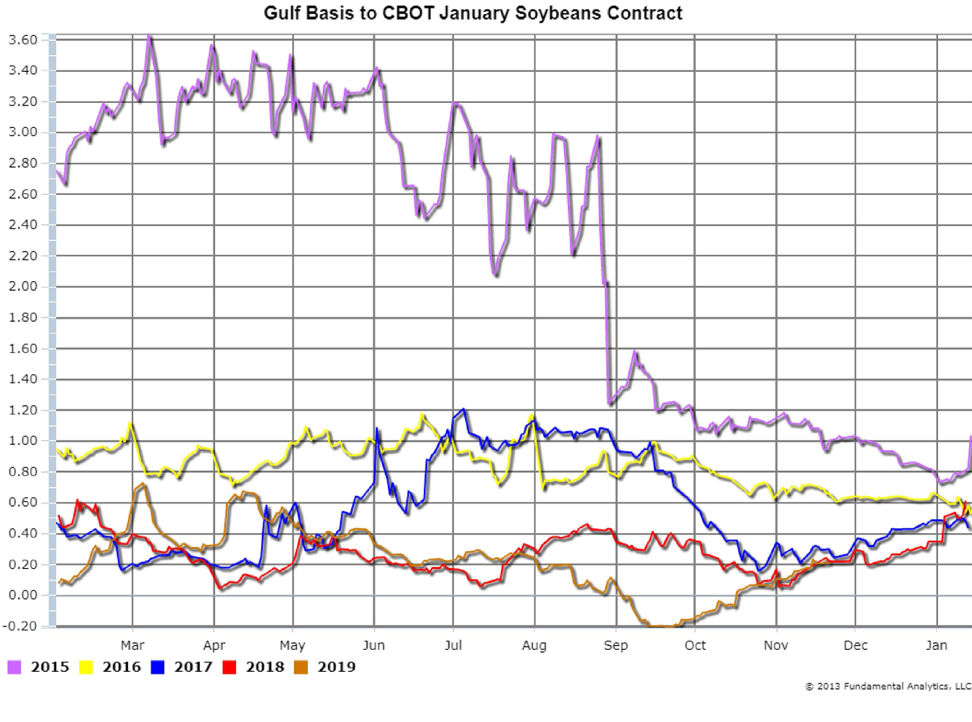Energía
Natural Gas prices have rallied as much as 50% from the beginning of November. The combination of forecasts for cold weather and seasonally low natural gas storage inventories caused prices to jump 20% to nearly $5 in one day, Wednesday, November 14, 2018 (Chart 1, large green bar).
As of Friday, November 16, 2028 US natural gas storage was at 3,113 bcf (Chart 2, black line). Storage was more than 600 bcf lower than a year earlier when storage was at 3,726 bcf (Chart 2, red line). In addition to outright natural gas price reaction as a response to storage levels and weather, the NYMEX natural gas March–April calendar spread is a measure of current storage levels and traders’ expectations of storage at the end of the Winter Withdrawal Season (Chart 3).
As with the outright natural gas price reaction, the March–April 2019 calendar spread jumped to nearly $1.60 on Wednesday, November 14, 2018 (Chart 3, black line). When traders believe natural gas storage levels are currently too low or will be low by the end of the Winter Withdrawal Season next March, the March–April calendar spread increases. For example, in November of 2014 the storage levels of natural gas peaked at 3,600 bcf (Chart 2, lavender line). At that time it was the lowest storage level in several years. The March–April 2015 calendar spread trading in November 2014 spiked to 70 cents (Chart 3, lavender line). The spread fell back as the 2014–2015 winter was not as severe as forecasted.
With the current low storage level, the March–April 2019 calendar spread will probably increase but will also be sensitive to the 2018–2019 winter weather and weather forecasts.
Chart 1
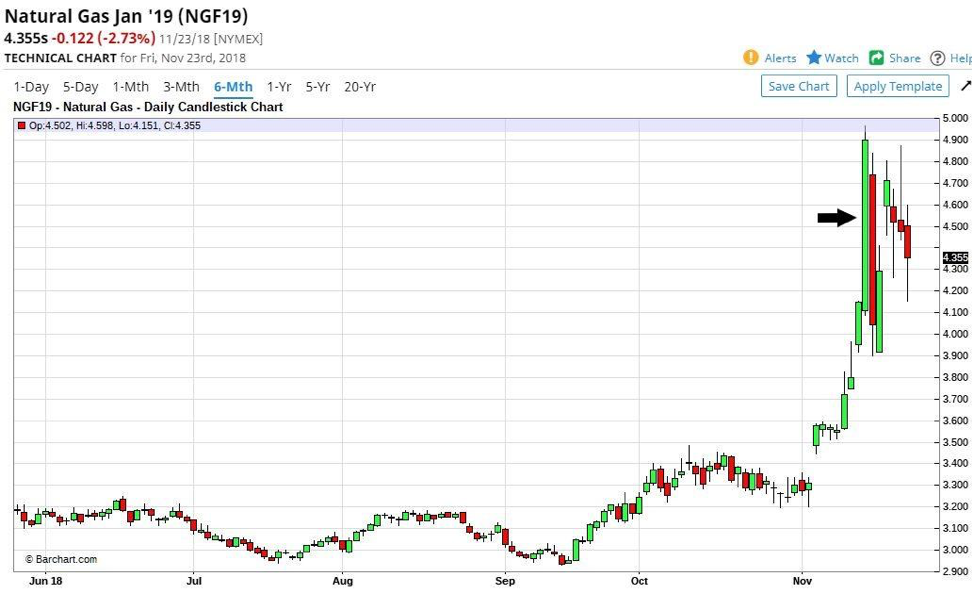
Chart 2
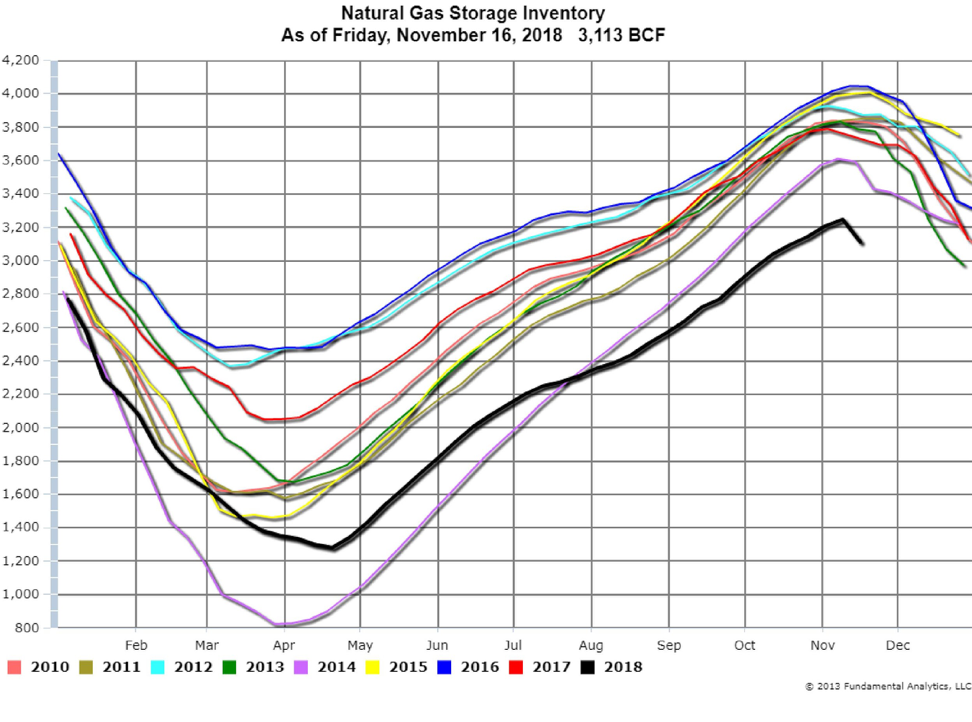
Chart 3
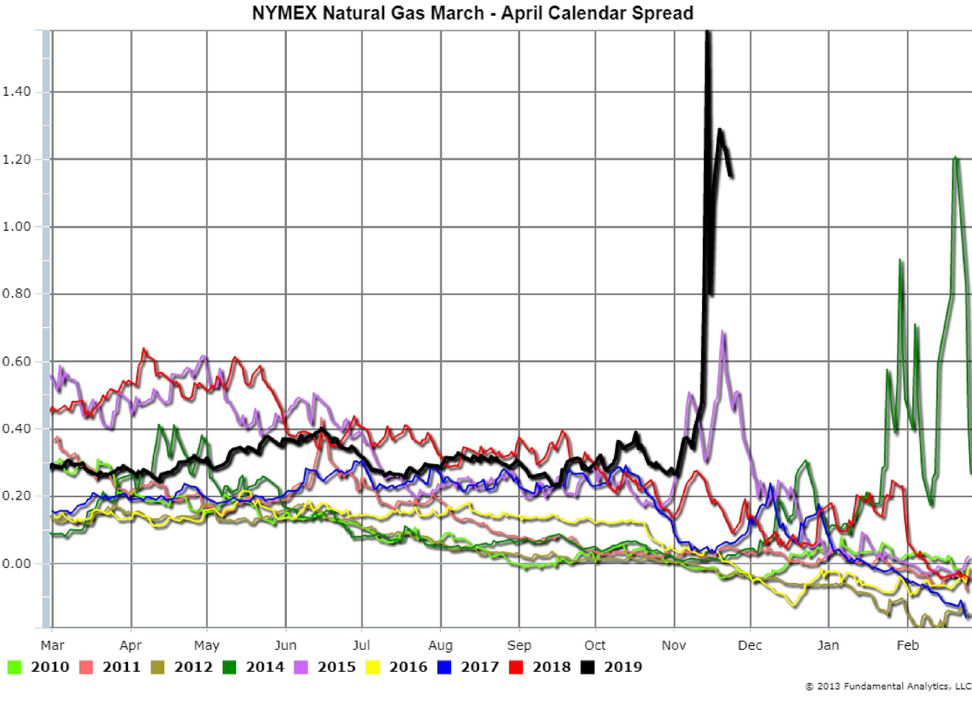
Grains
The shortened Thanksgiving week had a narrow trading range in soybeans prices. The narrow trading is a result in part of the fact that producers are withholding selling their production until prices improve. Back in mid-September when soybeans prices were at record lows near $8.30 per bushel (Chart 4), the Gulf cash basis was at a negative 20 cents (Chart 5, 2019 orange line).
Chart 4
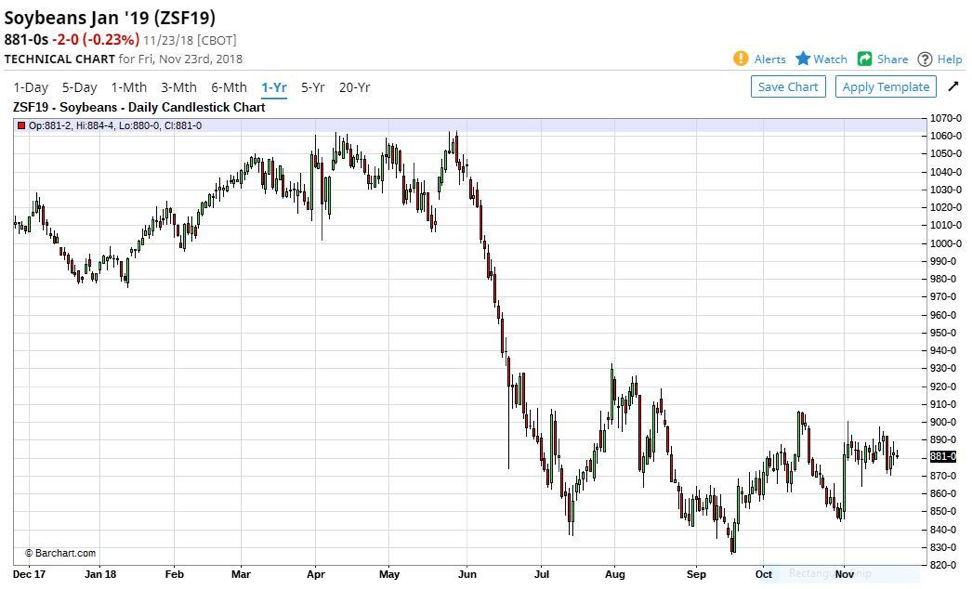
Because the growers have resisted selling at low prices, end users are raising their bids to obtain supplies. Consequently, since mid-September the basis in the soybeans cash market has been strengthening. The basis is now positive by more than 20 cents (Chart 5, 2019 orange line). The increase in basis may attract sellers and reduce inventories.
Chart 5
